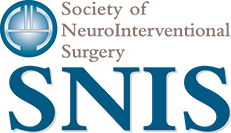At the time, I didn’t know what was going on, so I called for an ambulance. The paramedics came to the house and confirmed my dad was having a stroke. His speech was slurred. He had some drooping on the side of his face. His balance was off, and he couldn’t walk on his own. He was taken by ambulance to the hospital.
At the hospital, my dad’s condition became worse, yet he sat in the emergency room for several hours with the same symptoms he had in front of EMS. He was finally admitted to the intensive care unit, where I stayed by his side through the night. In the early morning hours, my dad crashed. He started shaking and stared off in the distance with his eyes fixed. Several hours later, doctors performed a mechanical thrombectomy to remove a clot and allow blood to flow to the portions of his brain that were impacted by the stroke. But it was too late.
My dad spent a month in a neuro ICU, a month in a long-term acute-care facility and then a few months at a rehab hospital. In August of 2015, I brought my dad back home to care for him. He passed away March 1, 2016.
I believe that if my father had received the most appropriate care when he first got to the hospital or if he could have been transferred earlier to a more specialized hospital, he would be alive today. While nothing can lessen the pain of my father’s passing, I was heartened at the end of 2018 when Gov. John Kasich signed legislation, House Bill 464, to help prevent other families from experiencing the pain my family has felt since the loss of my father.
Thanks to the new law, progress is underway toward improving the state’s system of stroke care, particularly for the most severe cases of stroke. My dad is proof that all states need to take action as Ohio has to make sure patients get to the right place at the right time. In Ohio, nearly 6,000 people died from stroke in 2016. I am grateful to our elected leaders for working to ensure more Ohioans can survive stroke, but more can be done. We need protocols to facilitate the proper assessment, triage and transport of patients suffering from a severe stroke to Level 1 stroke centers.
All patients deserve the chance to survive and thrive after stroke.
Mark Matasic, of Campbell, has become an advocate for improving stroke systems of care since his father’s death. This column was submitted by Capitol Partners as part of the “Get Ahead of Stroke campaign.”

